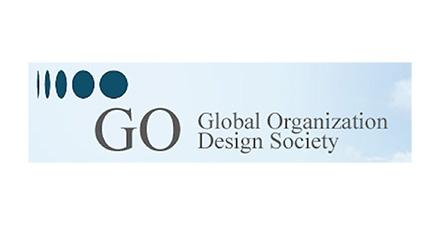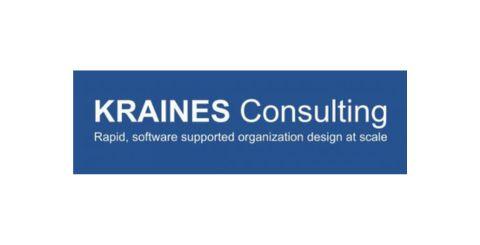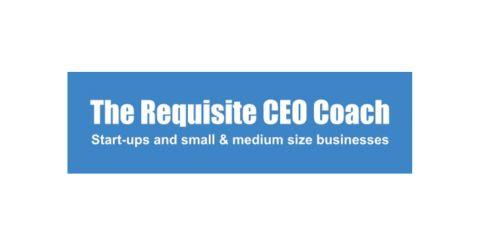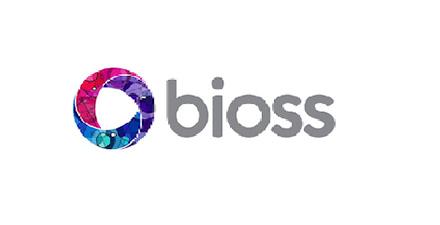The Competent President
30-question quiz for self-assessment of your knowledge and understanding of the book
This quiz assumes that you have read the entire book not a condensed version or a summary. You can use it for self-assessment of how well you understood the book.
Instructions: Select the single best answer that most accurately reflects the specific arguments, theories, and interpretations presented within the book.
- Craddock argues that the primary deficit in 21st-century presidents, evaluated through the Requisite Organization lens, is a lack of capability specifically at which cognitive processing level deemed minimal for the role?
A) Cumulative Logic (Symbolic Order)
B) Serial Logic (Symbolic Order)
C) Cumulative Logic (Abstract Order - Level 6)
D) Serial Logic (Abstract Order - Level 7)
- While acknowledging LBJ and Nixon possessed requisite cognitive capability (Level 7), Craddock, citing Jaques, attributes their political downfall primarily to:
A) Their inherent personality flaws ("minus-Temperament") exacerbated by stress.
B) A fundamental misunderstanding of the "domino theory."
C) Facing an adversary (Ho Chi Minh) operating at a significantly higher level of cognitive complexity
D) The unprecedented domestic turmoil and anti-war sentiment of the era.
- The book contrasts Washington's criteria (capability-position match) with Jefferson's (electability). What underlying danger does Craddock suggest arises from solely relying on Jefferson's criteria in the modern primary system?
A) It favors candidates with extensive legislative experience over executives.
B) It risks selecting popular candidates who lack the requisite cognitive complexity for the presidency's demands
C) It leads to candidates who are unable to unify their own party after nomination.
D) It overly emphasizes foreign policy experience.
- Craddock highlights the Iroquois concept of "happiness" as central to the founders' understanding of "civic virtue." How does this differ most significantly from common modern interpretations of happiness?
A) It emphasizes collective security and governmental responsiveness over personal contentment or wealth
B) It focuses on spiritual fulfillment rather than material success.
C) It is synonymous with individual liberty and freedom from government interference.
D) It prioritizes national strength and international prestige.
- When analyzing the 1976 and 1992 elections where candidates tied on C.I.P. level, Craddock interprets the voters' preference for the younger candidate (Carter, Clinton) as primarily indicating:
A) A desire for generational change in leadership.
B) A subconscious bias against older candidates.
C) An implicit valuation of potential future cognitive growth
D) Media narratives favoring youth and novelty.
- The "Archimedes Principle" of organizations, as applied in the book, suggests that:
A) Organizations inevitably become more complex over time.
B) An organization's structure and effectiveness tend to align with the cognitive capability level of its CEO
C) Hierarchical structures inherently stifle innovation.
D) Decentralized organizations are always more adaptable.
- Craddock's analysis of the 2000 and 2004 elections deviates from the general trend observed by Brause. What factor does he imply significantly influenced these outcomes despite the candidates' C.I.P levels?
A) The "spoiler" effect of third-party candidates like Nader.
B) Specific campaign gaffes and perceived character flaws (e.g., Kerry's "voted for...before I voted against it").
C) The overriding importance of foreign policy crises (9/11 and Iraq War) during Bush 43's terms.
D) A combination of A, B, and C specific to those elections.
- The book critiques the horizontal (left-right) political spectrum as inadequate for assessing presidential candidates because:
A) It fails to account for candidates' moral character.
B) It primarily measures policy alignment, not the vertical dimension of cognitive capability required for the job
C) It is easily manipulated by media pundits.
D) It is irrelevant in the context of foreign policy decision-making.
- What specific mechanism does Craddock suggest was employed by the "Wichita Network" and others to undermine potential rivals and control the political narrative, especially evident in the 2016 election?
A) Funding traditional negative campaign advertisements.
B) Utilizing "astroturf" movements (like the Tea Party) and manipulating social media with disinformation
C) Directly bribing political officials.
D) Focusing solely on influencing mainstream media coverage.
- The book discusses Walter Lippmann's criteria for leadership ("second sight," articulateness). Why might Craddock find these insufficient for voters selecting a president?
A) Lippmann's criteria are too subjective and lack objective measurement for voter assessment
B) Lippmann focused too much on foreign policy expertise.
C) Lippmann failed to consider the importance of electability.
D) Lippmann's criteria apply only to wartime presidents.
- Craddock analyzes Trump's communication style. Which specific Requisite Organization cognitive level does he most closely associate with Trump's typical mode of operation (e.g., declarative statements, focus on dominance, limited causal reasoning)?
A) Level 4 (Parallel Logic, Symbolic Order)
B) Level 5 (Declarative Logic, Abstract Order)
C) Level 6 (Cumulative Logic, Abstract Order)
D) Level 7 (Serial Logic, Abstract Order) - The book notes a key difference between how accountability functions in managerial hierarchies versus the political realm. What is the primary mechanism for accountability for the US President?
A) Oversight by the judicial branch.
B) Directives from Congressional committees.
C) Periodic re-election by the informed electorate
D) Scrutiny and reporting by the free press. - The failure of McNamara's M-16 rifle in Vietnam is presented as an example of:
A) Inevitable difficulties in wartime logistics.
B) The negative consequences of prioritizing efficiency over feedback and blocking negative information flow
C) Sabotage by enemy agents.
D) Insufficient funding for military procurement. - The "recency effect" is mentioned in relation to the 2016 Republican primary debates. How did this specifically benefit Trump, according to the analysis?
A) It made voters forget his earlier business failures.
B) It ensured his dominance and declarative statements were most memorable to lower C.I.P. level viewers just before voting
C) It allowed him to introduce new policy ideas late in the cycle.
D) It neutralized the impact of negative media coverage. - Craddock criticizes the 1976/78 change to US Copyright Law (lifetime + years) because:
A) It primarily benefited large corporations over individual creators.
B) It made US law incompatible with international standards.
C) It transformed copyright from a dynamic economic driver (via limited monopoly) into a static property, hindering innovation
D) It was overly complex and difficult to enforce. - The book suggests the modern primary system, influenced by the McGovern-Fraser reforms, has inadvertently weakened political parties and voters by:
A) Giving too much power to unelected "super-delegates."
B) Making campaigns excessively long and expensive.
C) Reducing the parties' ability to vet candidates for competence and creating a fragmented process vulnerable to manipulation
D) Discouraging candidates from outside Washington D.C. from running. - What is the primary danger Craddock associates with a "brokered convention" where no candidate wins on the first ballot, given the current C.I.P. level of many delegates?
A) The convention will likely nominate the most extreme candidate.
B) The delegates (often operating at C.I.P. Level 1) may be unable to compromise and select a viable candidate, leading to chaos
C) Party bosses will inevitably regain control behind the scenes.
D) The nominee chosen will lack broad public legitimacy. - The book implies that the Japanese economic success post-WWII, particularly in industries like automotive, was significantly aided by their adoption of:
A) Chicago-Smith neoliberal economic policies.
B) Strict government protectionism and trade barriers.
C) A combination of Deming's quality principles and Jaques's hierarchical concepts (hoshin kanri)
D) Massive government subsidies for key industries. - In analyzing the "dark triad" (narcissism, Machiavellianism, psychopathy), Craddock suggests that while concerning, which element might be considered almost a "necessary evil" for political survival, distinct from the others?
A) Psychopathy
B) Machiavellianism
C) Narcissism
D) All three are equally disqualifying according to the book.
- The book interprets Trump's repeated false claims not simply as lies, but often as a component of "gaslighting." What is the ultimate aim of this technique as described?
A) To entertain his base supporters.
B) To test the limits of media fact-checking.
C) To undermine the opponent's (and the public's) sense of reality and establish dominance/control.
D) To distract from his own policy failures.
- Craddock views the appointments Trump made to the judiciary, particularly the Supreme Court, primarily as an attempt to:
A) Ensure a strict interpretation of the Constitution.
B) Fulfill campaign promises to his evangelical base.
C) Advance the Wichita Network's goal of capturing control via the courts to reshape law in favor of their interests (and potentially absolutism).
D) Balance the perceived liberal bias of previous appointments.
- The book argues that voter turnout and registration efforts, while important, are insufficient if voters lack the ability to:
A) Align themselves correctly on the horizontal political spectrum.
B) Identify and reject foreign interference in elections.
C) Assess the vertical dimension of candidate competence based on applied logic.
D) Understand the nuances of complex economic policies.
- The failure of the Trump administration's response to the COVID-19 pandemic is attributed not just to immediate missteps, but more fundamentally to:
A) Insufficient international cooperation through the WHO.
B) Over-reliance on untested pharmaceutical treatments.
C) Prior dismantling of pandemic warning systems (like Predict) and suppression of scientific counsel (like the C.D.C.) driven by a low C.I.P. level.
D) Partisan obstruction by Democratic governors.
- What distinguishes "dominance" from "competence" in Craddock's analysis, even though both might produce a "cowing" effect?
A) Dominance relies on charisma, while competence relies on intellect.
B) Dominance is about exerting influence and control, often through intimidation, while competence involves the actual cognitive ability to solve complex problems.
C) Dominance is a characteristic of private sector leaders, competence of public sector leaders.
D) Dominance is always associated with unethical behavior, while competence is not.
- The book suggests that the concept of the "efficiency wage" (paying workers according to capability/contribution) is superior to the simple "minimum wage" because:
A) It reduces overall labor costs for businesses.
B) It aligns worker motivation with organizational goals and potentially increases productivity.
C) It is easier for governments to administer.
D) It eliminates the need for labor unions.
- Why does Craddock find Trump's use of "transference" (accusing opponents of his own flaws, e.g., "Lyin' Ted") particularly effective in debates?
A) It forces opponents onto the defensive and makes direct rebuttal appear weak or like a "me too" counter.
B) It confuses the moderators and disrupts the debate format.
C) It appeals directly to voters' sense of fairness.
D) It requires extensive fact-checking that cannot happen in real-time.
- The book suggests the increased reliance on social media for news has exacerbated the problem of electing competent leaders primarily because:
A) Social media platforms are inherently biased towards liberal viewpoints.
B) Social media algorithms often prioritize engagement (sensationalism, falsehoods) over accuracy, hindering informed assessment.
C) Older voters are less likely to use social media, skewing the information landscape.
D) Social media makes it harder for candidates to control their message.
- Craddock's assessment of Joe Biden's capability (pre-withdrawal) suggested he primarily operated at which logic level, making him potentially inadequate for the presidency's full demands according to the theory?
A) Level 4 (Parallel, Symbolic)
B) Level 5 (Declarative, Abstract)
C) Level 6 (Cumulative, Abstract).
D) Level 7 (Serial, Abstract)
- The ultimate failure Craddock attributes to presidents like Carter, Bush 41, Bush 43, Obama, and Trump (in his first term) is their inability to consistently:
A) Win the support of the opposing party in Congress.
B) Manage the national debt effectively.
C) Operate with the requisite dynamic logic (Level 7+) needed to solve the most complex problems facing the nation.
D) Communicate their vision effectively to the American people.
- What is the most fundamental solution proposed by Craddock to address the recurring election of presidents potentially lacking requisite competence?
A) Campaign finance reform to reduce the influence of money
B) Strengthening the vetting role of political parties.
C) Reforming the primary system to a national or regional model.
D) Educating voters to recognize and prioritize the vertical dimension of cognitive capability (applied logic and time-horizon) in candidates.
Answer Key
- D
- C
- B
- A
- C
- B
- D
- B
- B
- A
- B
- C
- B
- B
- C
- C
- B
- C
- C
- C
- C
- C
- C
- B
- B
- A
- B
- C
- C
- D




